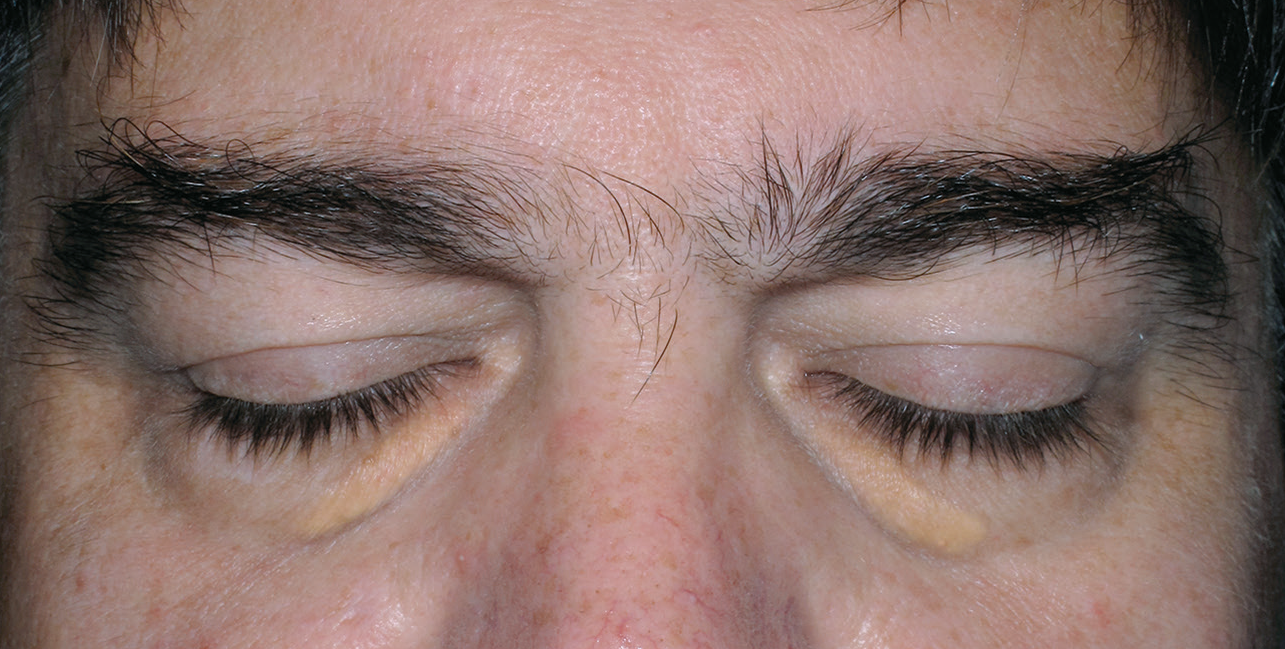Xanthelasmas
Xanthelasmas are cutaneous accumulations of cholesterol that are placed in the eyelids or around the eyes. They manifest as well-defined papules (supra elevations) with a yellowish color on the inner edges of the eyelids. They are asymptomatic and typically appear from the average age of life, more frequently in women than in men.
Although they are an accumulation of cholesterol, only 50% of the cases are associated with dyslipemia (excess of fats in the blood). They pose no risk to skin health, but if they are associated with hypercholesterolemia, they indicate that there is a higher cardiovascular risk (excess blood cholesterol is a risk factor for cardiac or cerebral events). For this reason it is imperative that, before the diagnosis of xanthelasmas, the dermatologist asks for a lipid profile to study the amount of fats that circulate through the blood.
Beyond the aspect of cardiovascular health, xanthelasmas are a reason for frequent aesthetic consultation, since they appear in very visible areas. Since they consist of a deposit in the middle part of the skin, they do not usually respond to topical treatment (creams) but should be removed by some procedure in the consultation. Three basic methods are available for its elimination: the surgery (excision and suture closure), application of trichloroacetic acid, or CO2 laser evaporation. Unless they are very large, surgery doesn’t usually practice, as it leaves the scar of the suture. The peeling of trichloroacetic acid usually requires numerous sessions to achieve the desired result and is usually a heavy procedure for the patient. In contrast, the CO2 laser allows evaporation of the excessive deposit of fat of the skin without the need to close the wound with stitches, and allows the elimination of xantelasmas in very few sessions. In comparative studies between the different techniques, the CO2 laser has shown a profile of efficacy and safety clearly superior to the other options. Laser elimination can be done under topical anesthesia (in cream) if the xantelasmas are small, or with local anesthesia, in a comfortable and fast way. A small scab will form on the treated areas, which will not hinder the normal life of the patient, with a typical healing process of one week. Generally speaking, one or two sessions of CO2 laser are sufficient to treat the xantelasmas in a satisfactory and comfortable way.

